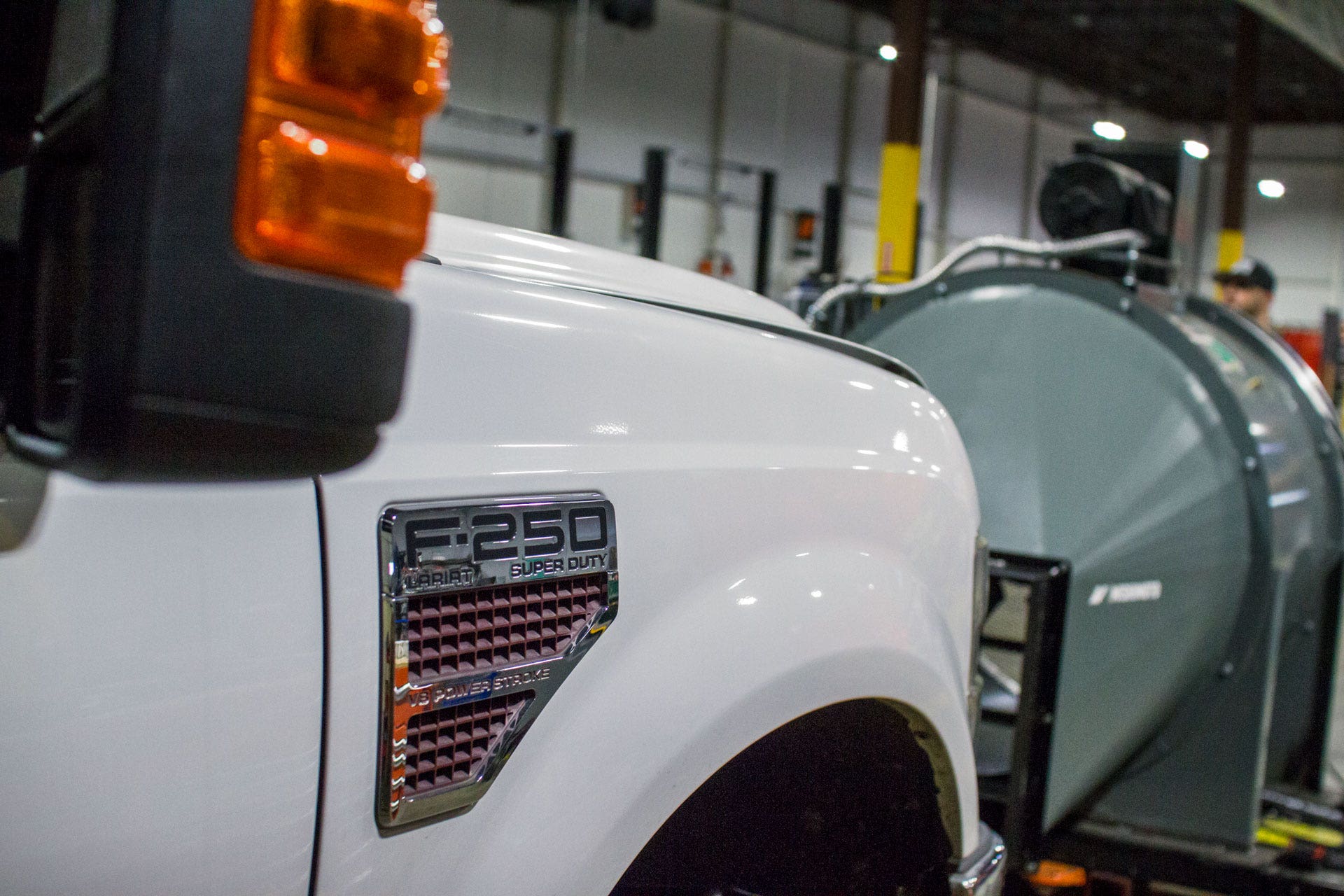
Redefine the Limits - Transmission Cooler R&D, Part 1: Stock Review
What defines a limit? In the English language, a limit is "a restriction on the size or amount of something permissible or possible." In practice, however, limits are not always as rigid. Anybody who's ever mastered a sport or skill will tell you, limits are made to be pushed and broken. A limit is only as defined as one's willingness to accept it. In the automotive industry, limits are often found by exceeding them. We push our cars and trucks until flaws appear, then step back and find a way to make them better.
Physics tells us that almost everything has limits, whether or not we've found them yet. Air at a certain temperature can only absorb so much heat energy, and transmission fluid loses its ability to lubricate beyond a specified temperature. Add a transmission cooler between the two, and you have hundreds of variables that will decide the limits of what's possible for your truck. In the case of the Ford 6.4L Powerstroke, the limits have yet to be defined.
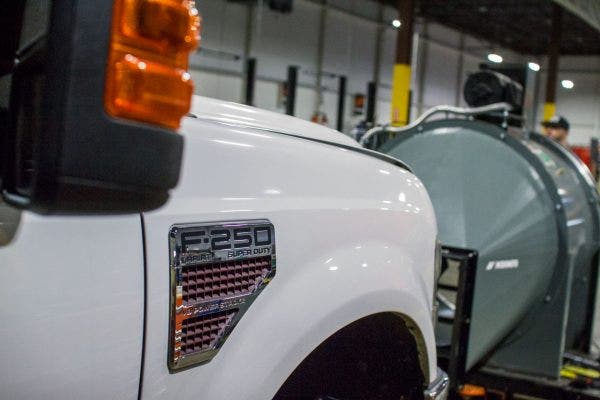
When it comes to towing and hauling heavy loads, the third-generation Ford Super Duty is hard to beat. With a 6.4L diesel engine that produces over 600 lb-ft of torque and a towing capacity up to 24,500 lbs, it's obvious what these trucks were designed for. Aside from its ample power, the 6.4L Powerstroke is mated to an equally capable transmission. Normally, this is where I would suggest that all those accolades mean very little, because they're let down by an inefficient transmission cooler. But that's not true here.
Before we dive into the stock 6.4L transmission cooler, you should know that there are essentially two different methods of transmission cooler core construction: tube-and-fin and stacked-plate.
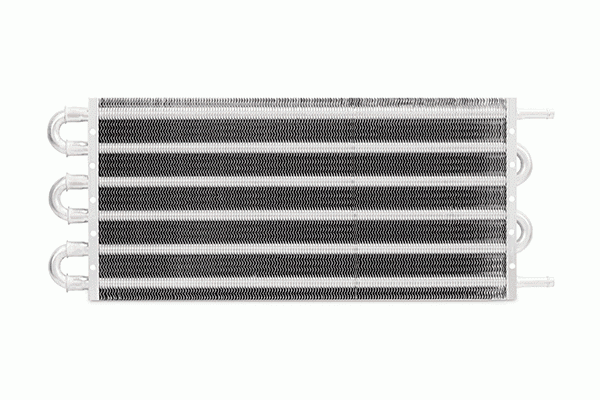
This animation shows how little surface area the fluid contacts in a traditional tube-and-fin cooler.
The most common type of transmission cooler, the tube-and-fin style, is usually constructed with a large diameter tube that snakes back and forth between cooling fins. This type of cooler is the cheapest, but least efficient, style of cooler. The tube that winds through the cooler has a low surface area in contact with the cooling fins, so a large area of the cooler does not transfer heat from the fluid. Because of their low cost, but equally low efficiency, tube-and-fin transmission coolers are fitted to light-duty cars and trucks that just need a cooler to maintain fluid temperatures during normal driving or very light towing.
Heavy-duty vehicles may still use a tube-and-fin style cooler, but it would likely be similar in construction to a radiator, with rows of long tubes that run the length of the cooler, stacked with cooling fins. That method of tube-and-fin construction is more efficient than the single tube style, but the tubes are prone to cracking and damage from rocks and debris. The most efficient and durable style of transmission cooler, and the kind suited for heavy towing and hauling, is the stacked-plate cooler.
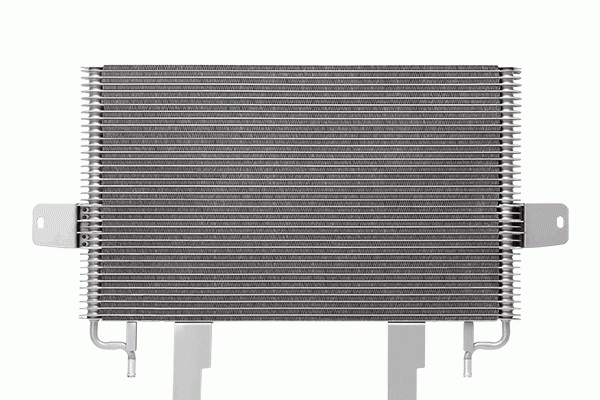
Here, you can see how much more surface area a stacked-plate cooler can cram into similar dimensions.
Stacked-plate coolers use a similar design to radiators, but instead of the traditional rolled or extruded tubes, they use hollow plates to carry the fluid across the core. These plates have a thicker wall than tubes, which makes them much more durable. The inside of the plates often includes fins known as turbulators. These turbulators move the fluid throughout the channel so that more of it is exposed to the plate's surface and cooled. Because of those features, a much smaller stacked-plate cooler can be used in place of a tube-and-fin cooler to achieve the same cooling.
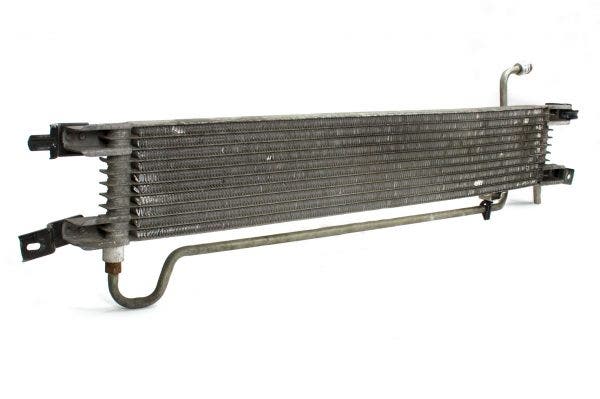
Unlike many OEM transmission coolers, the 6.4L cooler seems to have been made with the idea that owners may want to push the limits of what the truck and transmission are capable of, without destroying them. The stock transmission cooler for the Super Duty is a stout, stacked-plate design that takes up a huge swath of the front stack. From our research, we found that many owners never have an issue with the transmission overheating, and if they do, there are often compounding factors.
So, if what I'm saying is true, and the transmission cooler isn't the Achilles heel of the 6.4L's towing capability, then why are we making an upgraded transmission cooler? Remember physics; everything has its limits, especially automotive parts. While the stock cooler is well designed for towing and hauling up to the recommended weight, there's still a limit to how much it can cool.
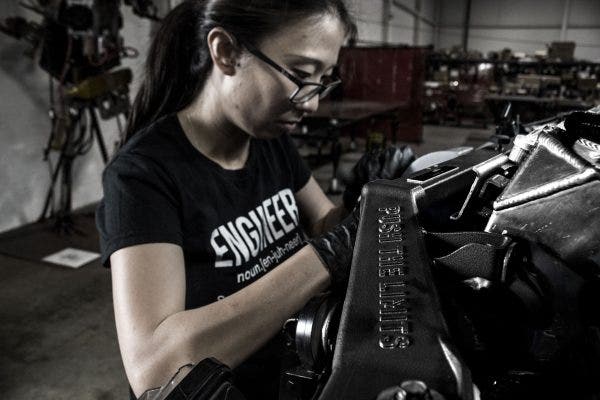
We're used to finding the limits of our vehicles by going past them, but that often results in hours on the side of the road or miles of driving delicately hoping that temp gauge doesn't creep any higher. It may take the right road, with the right amount of weight on the trailer, with the wind going the right direction to reduce the stock trans cooler's efficiency enough to overheat the transmission. But, as these trucks get older, the likelihood of conditions being just right increases. Eventually, the limits of the stock trans cooler will be found.

Instead of waiting to find the limits, we want to make a trans cooler that pushes the possibilities of what a direct-fit cooler can do. It will be a challenge to make a more efficient cooler than the stock unit within the stock location, so we'll be thoroughly testing this cooler as we go to make sure we're headed in the right direction. At Mishimoto, our motto is, "Push the limits," but we're going beyond just a push. We're redefining the limits.
Thanks for reading,
-Steve










